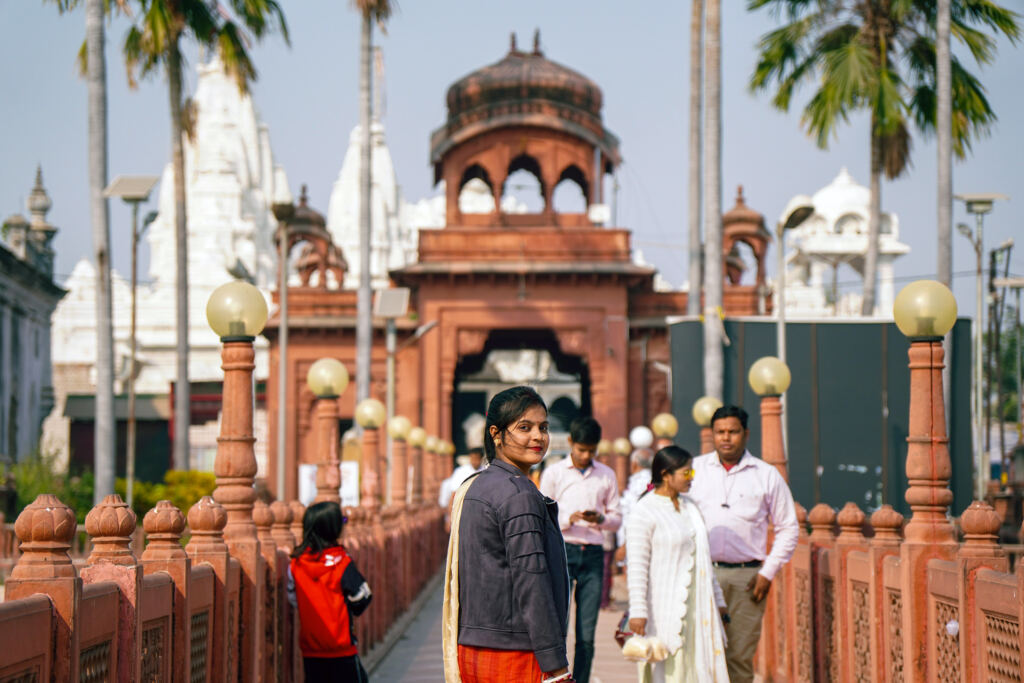1. The word “Jain” is derived from Jina, or “victorious one.”
Jains acknowledge the painfulness of living in the present world. They believe that one must conquer all wrong inner passions and seek to obtain release from this world. Thus, a “Jain” is one who is a follower of the teachings of Jainism and who is aiming for release from this world as understood by the Jain religion.
2. Jains have always been a relatively small religious minority in India.
Today, roughly 5 million Jains are numbered among the almost 1.4 billion population of India. Though Jains perceive their religion as eternal, the founding of Jainism likely can be traced to the 6th century B.C. Despite their small number, their influence has been significant throughout the centuries in that they have contributed significantly to literature, the sciences, and politics.
3. The foundational teachings of Jainism are established in the pronouncements of 24 historical characters known as Tirthankaras.
These teachers have come and gone and left their teachings. The instruction of the last of these, Mahavira (6th century B.C.), largely shapes contemporary Jainism. The collection of the Tirthankaras’ teachings is known as the Agamas, which is considered to be eternal and self-evident. The teachings have been handed down in oral form and in written form in a Prakrit dialect that was common in the Indian sub-continent at the time of Mahavira.
4. Jains have an interesting view of history.
Jains view history as cyclical. A single cycle consists of six eras. They believe the people at the beginning of each cycle are innocent and do not need any rules or religion to keep them pure. It is easier to obtain the ultimate goal of release in the earlier eras of a cycle than in the latter eras. As the cycle progresses, ethics and morality decline, resulting in shorter and shorter life spans and even shorter physical statures. The cycle of six eras eventually ends when the earth is destroyed by fire. However, the Jain’s holy city will remain, and the earth will be repopulated as a new cycle begins.
5. Jains are well known for their emphasis on tolerance.
The Jains have a perspective on truth and tolerance best illustrated by the story of the four blind men encountering an elephant for the first time. One grasped hold of the tail and declared that an elephant is like a rope. One touched a leg and said that an elephant is like a pillar. Another found the trunk and said an elephant is like a snake. The last felt the ear and argued that an elephant is like leather. Similarly, the Jains say that our senses and perceptions are inadequate to comprehend the whole truth. Any absolute statement does not have a true understanding of all perspectives. No one grasps all truth and, thus, no one point of view takes absolute precedent over another.
6. Perhaps the Jains’ most important teaching is that of non-violence.
The practice of ahimsa, or non-violence, varies according to one’s level of devotion to the teachings of Jainism. The most visible and common evidence of ahimsa is the strict vegetarian diet of the Jains. Jains not only practice non-violence toward all animals, but to all living matter, including plants and insects. According to Jainism, every living thing has a soul. Every soul has value and should not be harmed.
Note: The concepts of tolerance and non-violence are sometimes conflated. However, they are not identical matters. Jains are tolerant in regard to non-Jain teachings and scriptures, i.e., they do not automatically reject them. The teaching of ahimsa, or non-violence, prohibits harm to all living creatures.
7. The ultimate goal of Jainism is to attain moksha, or release.
Believing in rebirth, the goal of the Jains is to attain moksha, which is release from the endless cycle of rebirths. Through their efforts, largely those of following the “Three Jewels” of right faith, right knowledge, and right conduct, Jains are able to rid themselves of karma and its effects and obtain a state of omniscience and bliss in which desires are completely removed and the senses do not tantalize. Whether moksha is a place or a location-less state of existence is unclear. However, in obtaining moksha, the Jain is then free of suffering and discontentment.
8. Two sects of monks—Svetambara and Digambra—play very important roles in Jainism.
Within the Jain community are those who devote their lives fully to the pursuit of moksha. The monastic community consists of monks and nuns. The monastics teach the laity and in turn are supported by them. The monks take five primary vows, which they must maintain.
1. Non-Stealing
2. Non-Lying
3. Chastity
4. Non-Violence
5. No ownership of property
The monks and nuns desire greatly to distance themselves from any type of worldliness, even plucking their hair to remove any connection with worldly beauty or attractiveness. The Digambra monks will even shed clothes in order to repudiate connection with the world.
9. Social and family relationships are very important to Jains.
The Jains maintain very close family relations that are connected to their religious beliefs. Therefore, any change in religious beliefs would strain those relationships. This loss makes it very difficult for Jains to convert to Christianity. They lose their social status in the Jain community. The family might still have some contact with them while excluding them from many important occasions, such as weddings and funerals.
10. One must take care in relating to and talking to Jains.
Happily, Jains are typically warm and hospitable and display a readiness to engage those who come genuinely seeking friendship with them. Due to the Jains’ stress upon non-violence and respect for all living things, similar attributes should be displayed in the life of any effective Christian witness. In short, one must exhibit the fruits of the Spirit as noted in Galatians 5:22-23. Void of such characteristics, one is unlikely to have an effective witness among the Jains.
Because of the Jains’ teaching of ahimsa (no harm to living beings), the cross will be seen as particularly scandalous. However, they also hold to the law of “the higher good.” We will need to explain the higher good of Jesus’ suffering: that is, that by his death he has redeemed and given life to many.
In the book of Revelation, the Apostle John reported that he saw “a great multitude that no one could number, from every nation, from all tribes and peoples and languages, standing before the throne and before the Lamb” (Revelation 7:9, ESV). No nation or people has been omitted from God’s gracious, redemptive plan. Before that throne will surely be those Jains who hear and believe the gospel, and we find great encouragement in that promise.





